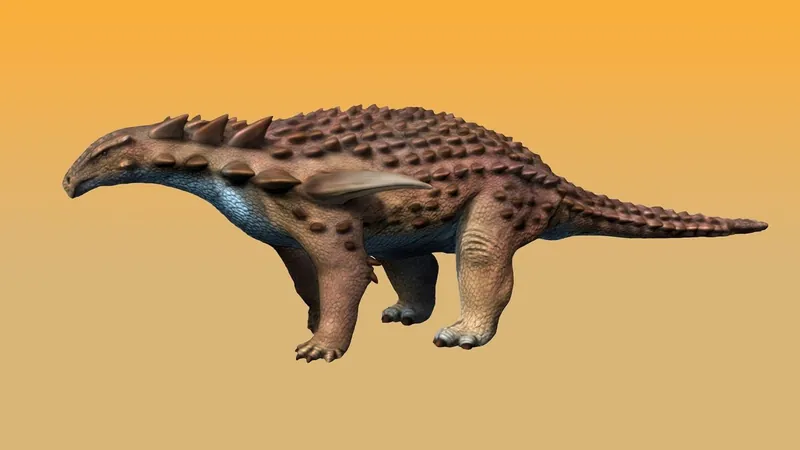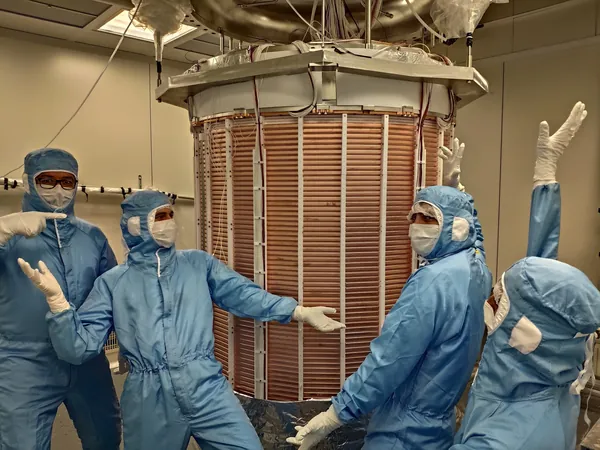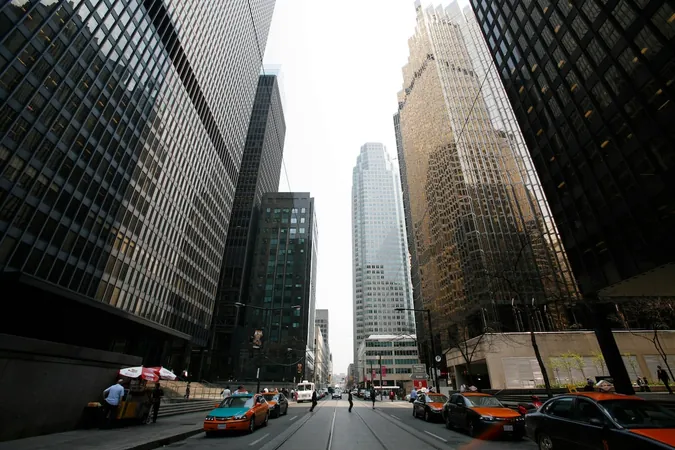
Unbelievable Discovery: How an Armored Dinosaur Could Survive a Car Crash!
2024-11-07
Author: Amelia
Unbelievable Discovery: How an Armored Dinosaur Could Survive a Car Crash!
A groundbreaking revelation has emerged from the fossil of an ankylosaur, a type of armored dinosaur, suggesting that its impressive plating could withstand the impact of a high-speed car crash. This astonishing finding comes from the best-preserved dinosaur fossil ever discovered, belonging to a nodosaur that roamed the Earth around 110 to 112 million years ago during the Early Cretaceous period. Measuring up to 18 feet (5.5 meters) long, the fossil has provided scientists with detailed insights into the robust structure of its armor.
Study co-author Michael Habib, a biomechanical paleontologist from UCLA, explained that their research demonstrated this unique dinosaur could withstand significant force, equivalent to that of an F150 truck traveling at high speed. Habib elaborated on these findings during a presentation at the Society for Vertebrate Paleontology's annual meeting on October 30.
Historically, paleontologists believed that the defensive capabilities of armored dinosaurs like nodosaurs were primarily based on the bony structures that remained in fossils, with the assumption of a simple keratin cover akin to a turtle's shell. However, a game-changing discovery in 2017 unveiled an exceptionally preserved fossil of a nodosaur species named Borealopelta markmitchelli found in a mine in Alberta, Canada. This specimen was so well-preserved that researchers could analyze not only the color of its armor but also examine its last meal.
What astonished scientists was the discovery of a significantly thick layer of keratin covering the bony armor—almost 6.3 inches (16 centimeters) thick in some areas, dramatically thicker than the mere 0.6 inches (1.5 cm) seen on modern cattle horns. By comparing the keratin structures to those of living creatures, such as porcupine quills, researchers were able to estimate the force the nodosaur's armor could withstand, determining that it could endure over 125,000 joules of energy per square meter—an impact comparable to a high-speed car crash.
Habib has stated, "These animals were not simply wearing plate armor; they were donning a bulletproof vest over their plate armor." Such a dual-layered defense system likely evolved as a protection against large carnivorous dinosaurs that could pose a significant threat.
The keratin sheaths provided not only protection but also flexibility. This adaptability means that if these layers suffered damage, they could be sheared off without the long healing process required for broken bones.
Remarkably, the strength of the nodosaur's armor may have also played a role in combat among males competing for mates, suggesting that some of these armored giants may have engaged in brutal fights not only against predators but with their own kind. As evolutionary biologist Emma Schachner noted, this research sheds new light on whether the armor was employed primarily for predator defense or intra-species battles.
This crucial investigation signifies a shift in our understanding of dinosaur defense mechanisms. It further implies that many armored dinosaurs likely displayed thick keratin sheaths for protection. "Horned dinosaurs, with their armored and weaponized faces and heads, probably relied more on keratin than previously acknowledged," Habib emphasized.
Stay tuned for more astonishing discoveries as paleontology continues to unravel the mysteries of these ancient giants!









 Brasil (PT)
Brasil (PT)
 Canada (EN)
Canada (EN)
 Chile (ES)
Chile (ES)
 España (ES)
España (ES)
 France (FR)
France (FR)
 Hong Kong (EN)
Hong Kong (EN)
 Italia (IT)
Italia (IT)
 日本 (JA)
日本 (JA)
 Magyarország (HU)
Magyarország (HU)
 Norge (NO)
Norge (NO)
 Polska (PL)
Polska (PL)
 Schweiz (DE)
Schweiz (DE)
 Singapore (EN)
Singapore (EN)
 Sverige (SV)
Sverige (SV)
 Suomi (FI)
Suomi (FI)
 Türkiye (TR)
Türkiye (TR)